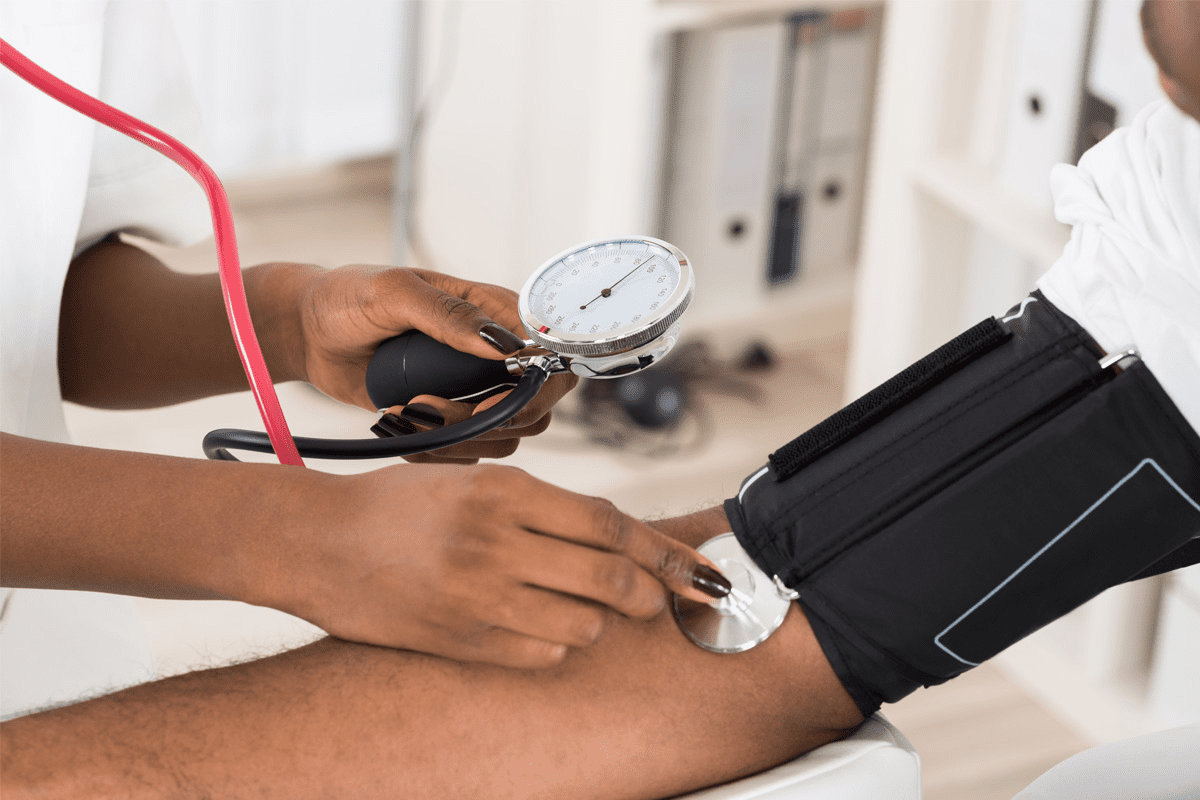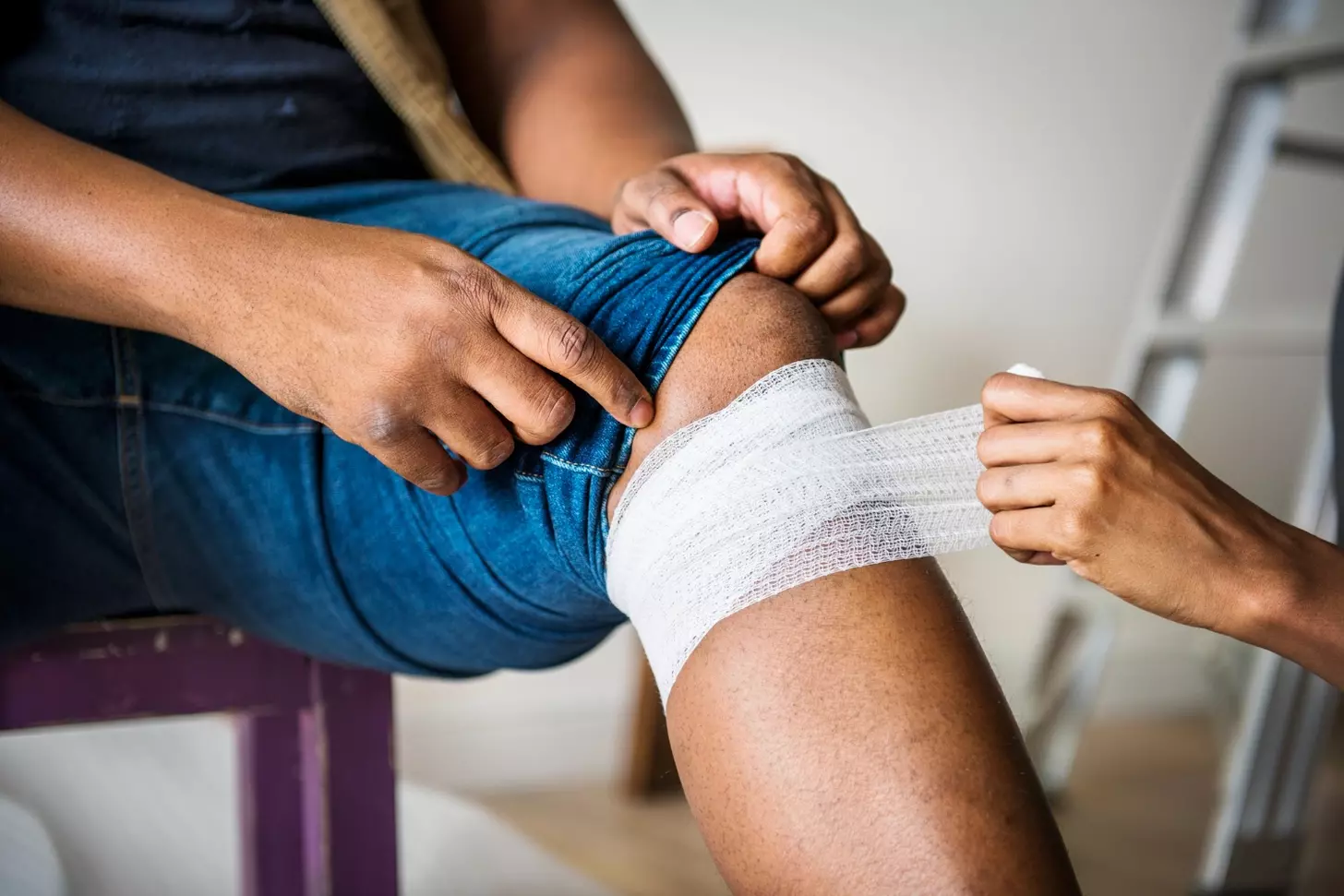Last Updated on November 5, 2025 by

About 10 million Americans have brittle bone disease, or osteoporosis. This makes their bones weak and more likely to break.
As osteoporosis gets worse, the chance of breaking bones goes up. This can lead to serious health problems. It’s important to know the signs of osteoporosis getting worse to stop more damage.
Key Takeaways
- Understanding osteoporosis definition helps in identifying its progression.
- Osteopenia definition is closely related to osteoporosis, as it is a precursor condition.
- Monitoring signs of osteoporosis is vital for preventing fractures.
- Early detection can significantly improve treatment outcomes.
- Lifestyle changes and medical treatments can help manage osteoporosis.
Understanding What Is Osteoporosis
Osteoporosis is a condition that weakens bones, making them more likely to break. It’s often called a “silent disease” because you might not notice it until a bone breaks. This makes it hard to catch early.
Definition and Basic Mechanism
Osteoporosis happens when bones lose density and quality. This leads to a higher chance of breaking bones. It’s caused by an imbalance in bone breakdown and rebuilding.
Bones are always being remade, but in osteoporosis, they break down faster. This results in weaker bones. Many things can cause osteoporosis, like hormonal changes, age, and lifestyle.
For example, menopause can speed up bone loss in women. Not getting enough calcium and vitamin D, and not being active, also play a role.
How Osteoporosis Differs from Normal Bone Aging
Bones naturally get weaker with age, but osteoporosis is different. It’s a faster and more severe loss of bone strength. This makes osteoporosis much more dangerous.
There are a few main differences between osteoporosis and normal aging:
- Rate of Bone Loss: Osteoporosis causes bones to lose density faster.
- Bone Quality: Osteoporotic bones are not just less dense but also have structural weaknesses.
- Fracture Risk: People with osteoporosis are at a much higher risk of breaking bones.
Knowing these differences is key to spotting and treating osteoporosis. Early detection and treatment can help prevent fractures and improve life quality.
The Structure and Function of Healthy Bones

The human body’s skeletal system is complex. It supports, protects, and helps us move. It’s made up of 206 bones that work together for different functions.
Anatomy of Bones in the Human Body
Bones in the human body are detailed. They are divided into four types: long, short, flat, and irregular. Long bones, like the femur and humerus, help us move and support our body.
Short bones, such as the carpals and tarsals, keep things stable. Flat bones, like the sternum and skull, protect our organs. Irregular bones, including the vertebrae and pelvis, have unique shapes for specific tasks.
Bone Density and Physiological Density
Bone density is how much bone tissue is in a certain area. It’s usually measured in grams per square centimeter. Physiological density looks at how well bones support our body’s functions.
Healthy bones have high bone density. This is key for handling stress and avoiding fractures. Diet, exercise, and genetics affect bone density, showing how important it is for bone health.
Keeping bone density high is critical to avoid osteoporosis. As we get older, it’s essential to watch and care for our bones through diet, exercise, and medical help.
The Progressive Nature of Osteoporosis
Osteoporosis goes through several stages as it gets worse. Each stage shows different changes in bone health and density. Knowing these changes helps manage the condition better.
Stages of Bone Loss
The disease starts with a decline in bone density, moving through stages. The first stage, osteopenia, has lower bone mineral density than normal. But it’s not low enough to be called osteoporosis yet.
As bone loss gets worse, it moves into osteoporosis. This stage has much lower bone density and a higher risk of fractures.
Many factors can speed up this transition, like age, lifestyle, and genetics. It’s key to check bone density regularly with bone mineral density tests to catch it early.
From Osteopenia to Severe Osteoporosis
The move from osteopenia to severe osteoporosis is a gradual loss of bone. As osteoporosis gets worse, the chance of breaking bones goes up, mainly in older people. Severe osteoporosis has very low bone density and a high risk of fractures, leading to serious health issues.
Spotting the symptoms of osteopenia and knowing the stages of osteoporosis helps manage it early. By changing lifestyle habits and possibly using medicine, you can slow down osteoporosis. This reduces the risk of serious problems linked to severe osteoporosis.
Early Warning Signs of Osteoporosis
Osteoporosis can start quietly, with signs that are easy to miss. As it gets worse, it can cause big changes in the body. These changes might seem small at first but can show a bigger problem. Knowing these early signs is key to catching it early and treating it.
Subtle Changes in Posture
A change in how you stand can be an early sign of osteoporosis. You might notice your upper back curving or you stooping. This happens because your vertebrae get weaker and shrink, changing how your spine looks. Watching your posture and noticing any odd changes is a big step in spotting problems early.
Initial Pain Patterns
Back pain is a common sign of osteoporosis. It happens when your vertebrae weaken and might break or get squished. The pain can be mild or very bad and might stay all the time or come and go. It’s very important to pay attention to any new or getting worse back pain, as it could mean osteoporosis.
Silent Symptoms You Might Miss
Some signs of osteoporosis are quiet or can be mistaken for other things. For example, losing height slowly can happen because of broken vertebrae. Also, if your clothes don’t fit the same or your body shape changes, it could be osteoporosis. Being careful about these small changes can help catch it early.
| Symptom | Description | Possible Indicator |
| Posture Change | Curvature of the upper back or stooping | Vertebral weakening |
| Back Pain | Mild to severe, constant or intermittent | Vertebral fractures or compression |
| Loss of Height | Gradual reduction in height | Vertebral compression fractures |
Spotting the early signs of osteoporosis is vital for managing it well. By noticing small changes in how you stand, the first signs of pain, and other quiet symptoms, you can get help early. This can stop more bone loss and fractures.
Recognizing Worsening Osteoporosis: Physical Signs
As osteoporosis gets worse, you’ll notice several physical signs. These signs show that the disease is getting more serious. They mean you might need to see a doctor.
Height Loss and Spinal Changes
One early sign is height loss. This happens when vertebrae compress, causing them to collapse or deform. This can make you shorter.
Spinal changes are another key sign. Vertebrae may become wedge-shaped or develop compression fractures. This changes the spine’s shape.
Increasing Curvature of the Spine (Kyphosis)
Kyphosis is when the spine curves more. This happens when vertebrae weaken and compress. It makes the spine curve forward, leading to a hunched posture.
This curvature can make you look different. It can also cause discomfort and breathing problems if it’s severe.
Changes in Body Shape and Proportions
Osteoporosis can also change how your body looks. The spine’s compression and posture changes can make your abdomen look bigger. Your body’s shape and proportions can also change.
These changes can affect how you feel about yourself. They can also lower your quality of life.
It’s important to notice these signs early. This way, you can get medical help quickly. Understanding these changes helps you manage your condition better.
Pain Patterns That Indicate Progression
Osteoporosis can cause pain in the back, spine, hips, and joints. As it gets worse, these pains can get stronger and harder to handle.
Back and Spine Pain Characteristics
Back and spine pain from osteoporosis can feel different. It might start as a dull ache or a sharp pain. This pain often gets worse when you move or do more activities. Vertebral fractures, a common problem, can cause sudden, severe back pain.
A study in the Journal of Bone and Mineral Research showed that vertebral fractures really hurt your quality of life. They cause pain, loss of height, and spinal deformity.
“Vertebral fractures are a hallmark of osteoporotic progression, leading to significant morbidity and mortality.”
Hip and Joint Pain Development
Hip and joint pain can also show that osteoporosis is getting worse. When bones lose density, the risk of fractures and joint wear increases. This leads to pain and stiffness in the hips and other joints. Osteoarthritis, often found with osteoporosis, can make joint pain worse.
| Joint/Area | Common Pain Characteristics |
| Hips | Pain with movement, stiffness, often after rest |
| Spine | Dull ache or sharp pain, often due to vertebral fractures |
| Other Joints | Pain and stiffness, possibly from osteoarthritis or fractures |
Distinguishing Osteoporotic Pain from Other Conditions
It’s important to tell osteoporotic pain from pain from other issues. Osteoporotic pain usually comes from fractures or bone wear. But, arthritis or muscle strain can cause different kinds of pain. Seeing a doctor is key for the right diagnosis.
Knowing the pain signs of osteoporosis can help people get medical help early. This might stop more bone loss and fractures.
Fracture Risk: A Key Indicator of Disease Progression
Fracture risk shows how bad osteoporosis is getting. It shows how much bone loss and damage there is. As osteoporosis gets worse, the chance of getting fractures goes up. This really affects a person’s quality of life.
Types of Osteoporotic Fractures
Osteoporotic fractures can happen in different ways. The most common are vertebral compression fractures, hip fractures, and wrist fractures. These fractures often happen from falls or stress that wouldn’t hurt someone with healthy bones.
Types of Osteoporotic Fractures:
- Vertebral compression fractures
- Hip fractures
- Wrist fractures
How Fracture Risk Changes as Osteoporosis Worsens
As osteoporosis gets worse, bones lose density and structure. This makes bones more likely to break. This change happens slowly, but the risk of fractures goes up over time if not treated.
| Osteoporosis Stage | Fracture Risk Level |
| Osteopenia | Moderate |
| Osteoporosis | High |
| Severe Osteoporosis | Very High |
Vertebral Compression Fractures
Vertebral compression fractures are common in osteoporosis. They happen when the bones in the spine weaken. These fractures can cause loss of height, spinal deformity, and chronic pain.
Checking fracture risk is key in managing osteoporosis. Doctors use bone density tests and risk models to guess if someone might break a bone.
Mobility and Functional Changes
Mobility and functional changes are key signs of osteoporosis getting worse. As it worsens, people may find it harder to move around. This can really affect their daily life.
Declining Physical Abilities
Osteoporosis can make it tough to stay strong and flexible. Even simple things become hard because of bone and muscle loss.
- Decreased muscle strength
- Reduced flexibility
- Difficulty in performing daily tasks
Impact on Daily Activities
Osteoporosis makes everyday tasks harder. Simple things like walking or climbing stairs can be tough.
Some daily activities affected include:
- Walking or mobility
- Climbing stairs
- Standing or sitting for extended periods
Balance and Coordination Issues
As osteoporosis gets worse, balance and coordination suffer. This raises the risk of falls and fractures, making things even harder.
Key issues include:
- Impaired balance
- Coordination problems
- Increased risk of falls
In conclusion, the changes in mobility and function due to osteoporosis can really impact a person’s life. It’s important to understand these changes to manage the condition well.
Diagnostic Tests That Measure Progression
Diagnostic tests are key in tracking osteoporosis and guiding treatment. They help doctors see how bone density and other factors change. This shows how severe osteoporosis is.
Bone Mineral Density Tests
Bone mineral density (BMD) tests are vital for tracking osteoporosis. The most common test is the Dual-Energy X-ray Absorptiometry (DXA) scan. DXA scans measure the density of minerals in bones, giving a T-score. This score compares the patient’s bone density to a healthy young adult’s.
Interpreting T-Scores Over Time
T-scores from BMD tests are key for diagnosing and tracking osteoporosis. A T-score of -2.5 or lower means you have osteoporosis. Tracking changes in T-scores helps doctors see if treatment is working and if they need to make changes.
Biochemical Markers of Bone Turnover
Biochemical markers of bone turnover are also used to track osteoporosis. These markers, like N-telopeptide and bone-specific alkaline phosphatase, show how fast bones are being broken down and built up. High levels of these markers can mean bone turnover is too fast, which is linked to osteoporosis getting worse.
Using these tests, doctors can fully understand how osteoporosis is progressing in their patients. They can then create specific treatment plans to manage the condition well.
Risk Factors That Accelerate Osteoporosis Progression
Knowing what speeds up osteoporosis is key to managing it well. Many things can make osteoporosis get worse faster. Knowing these can help people protect their bones.
Age and Gender Considerations
Age is a big risk for osteoporosis. As we get older, our bones lose density, making them more likely to break. Women, after menopause, are at higher risk because estrogen levels drop, which helps keep bones strong. Men also lose bone density with age, but not as fast as postmenopausal women.
Lifestyle Factors: Diet, Exercise, and Habits
Our lifestyle choices greatly affect how fast osteoporosis gets worse. A diet without enough calcium and vitamin D can lead to bone loss. Exercising regularly, like weight-bearing and resistance exercises, helps keep bones strong. But, not moving much can make bones lose density faster. Smoking and drinking too much alcohol also harm bones by making them weaker.
Medical Conditions and Medications That Worsen Bone Loss
Some health issues and medicines can make osteoporosis worse. Conditions like hyperthyroidism, rheumatoid arthritis, and stomach diseases can cause bone loss. Using corticosteroids and certain anticonvulsants for a long time can also weaken bones. Knowing these risks helps doctors and patients fight osteoporosis better.
By understanding and tackling these risks, people can slow down osteoporosis and keep their bones healthy.
When to Seek Medical Attention
Osteoporosis can progress, and knowing when to seek medical help is key. With early intervention, you can manage it well. But ignoring symptoms can lead to serious problems.
Warning Signs That Require Immediate Care
Some symptoms need immediate attention. Sudden back pain could mean a fracture. Also, any change in posture or height is a red flag. If a minor fall causes a fracture, see your doctor right away.
Key warning signs include:
- Sudden, severe back pain
- Loss of height or change in posture
- Fractures from minor incidents
Scheduling Regular Monitoring
Regular check-ups are essential for osteoporosis management. They help track the disease’s progress and adjust treatments. Bone density tests are key, showing how your bones are doing.
| Monitoring Activity | Frequency | Purpose |
| Bone Density Test | Every 1-2 years | Assess bone health and density |
| Physical Examination | At least annually | Evaluate posture, height, and overall health |
| Review of Medical History | At each visit | Update treatment plans based on disease progression |
Questions to Ask Your Healthcare Provider
Being proactive means asking the right questions. Ask about new treatments, lifestyle changes, and medication side effects.
Example questions include:
- What are the most effective treatment options for my condition?
- How can I modify my lifestyle to improve my bone health?
- What are the possible risks of the treatments I’m considering?
Stay informed and keep in touch with your healthcare provider. This way, you can manage osteoporosis better and avoid complications.
Complications of Advanced Osteoporosis
Advanced osteoporosis can cause many problems that affect a person’s life quality. As it gets worse, the chance of serious fractures, long-term disability, and mental health issues grows.
Severe Fractures and Their Consequences
One big problem with advanced osteoporosis is the higher risk of severe fractures. These can happen even with small falls. Vertebral compression fractures, for example, can cause a lot of pain and change a person’s shape.
The National Osteoporosis Foundation says, “Fractures from osteoporosis can be very serious, leading to disability and even death.” This shows why it’s key to manage osteoporosis to avoid these bad outcomes.
Long-term Disability Risks
Osteoporotic fractures can make a person long-term disabled, making it hard to do everyday things. This can mean losing independence and needing help with daily tasks, even leading to living in a care facility.
This risk is very worrying for older adults. It can make their health and happiness go down. Experts say, “The loss of mobility and independence can deeply affect a person’s mental and physical health.”
Psychological Impact of Progressive Disease
The psychological impact of advanced osteoporosis is very important. Chronic pain, losing mobility, and the fear of breaking bones can cause anxiety and depression. The mental strain can be as bad as the physical symptoms, hurting a person’s life quality.
Healthcare providers need to deal with both the physical and mental sides of osteoporosis. Knowing about the problems of advanced osteoporosis helps people take steps to manage their condition and live better lives.
Treatment Approaches for Progressive Osteoporosis
Managing progressive osteoporosis requires a variety of treatments. Each person’s needs are different. A mix of treatments is key to slow the disease, ease symptoms, and improve life quality.
Medication Options for Worsening Disease
Medicines are very important in treating progressive osteoporosis. Bisphosphonates help slow bone loss and lower the chance of fractures. Other options include:
- Denosumab, which stops bone breakdown.
- Teriparatide and abaloparatide, which build bone.
- Hormone therapy for those with hormone imbalances that lead to osteoporosis.
Physical Therapy Interventions
Physical therapy is a big part of managing osteoporosis. It helps keep bones strong, improves balance, and lowers fall risk. A physical therapist can create a custom exercise plan that includes:
- Weight-bearing exercises to strengthen bones.
- Resistance training to boost muscle and bone density.
- Flexibility and balance exercises to prevent falls.
Surgical Considerations for Severe Cases
In severe cases, surgery might be needed to fix fractures or spinal problems. Surgical options include:
- Vertebroplasty and kyphoplasty to stabilize vertebral fractures.
- Spinal fusion surgery to correct severe spinal deformities.
- Joint replacement surgery for osteoporotic fractures in the hip or other joints.
Combining these treatments helps people with progressive osteoporosis manage their condition. This way, they can live a better life.
Conclusion: Living Well with Progressive Osteoporosis
Living with osteoporosis means taking action to manage it. Knowing the signs of worsening osteoporosis helps. This way, people can lower their fracture risk and keep their quality of life high.
Managing osteoporosis well involves several steps. This includes medical treatments, lifestyle changes, and regular check-ups. Treatments might include medicines to slow bone loss, physical therapy, and eating right to get enough calcium and vitamin D.
By controlling their condition and working with their doctor, people with osteoporosis can handle their symptoms better. They can also lower their risk of serious problems and stay independent. With the right strategy, it’s possible to live well with osteoporosis and have a fulfilling life despite its challenges.
FAQ
What is osteoporosis?
Osteoporosis is a condition where bones weaken. This makes them more likely to break. It happens when the body can’t make enough new bone or when too much old bone is lost.
How many bones are in the human body?
Adults have 206 bones in their skeleton.
What is the difference between osteoporosis and osteopenia?
Osteopenia means bone density is lower than normal but not too low. Osteoporosis is when bones are very brittle and break easily, raising the risk of fractures.
What are the signs of osteoporosis getting worse?
Signs include losing height, spinal changes, and kyphosis. Other signs are changes in body shape, back and spine pain, and an increased risk of fractures.
What is brittle bone disease?
Brittle bone disease, or osteogenesis imperfecta, is a genetic disorder. It makes bones fragile and prone to breaking.
How is osteoporosis diagnosed?
Doctors use bone mineral density tests like DXA scans to diagnose osteoporosis. They might also look at biochemical markers of bone turnover.
What are the risk factors for osteoporosis?
Risk factors include age, gender, family history, and lifestyle. Diet, exercise, and certain medical conditions or medications also play a role.
Can osteoporosis be treated?
Yes, it can be treated with medication, physical therapy, and lifestyle changes. In severe cases, surgery might be needed.
What is transient osteoporosis of the hip?
Transient osteoporosis of the hip is a rare condition. It causes temporary loss of bone density in the hip, leading to pain and increased fracture risk.
How can osteoporosis progression be slowed?
Progression can be slowed by eating a healthy diet rich in calcium and vitamin D. Regular exercise, avoiding smoking and excessive alcohol, and following prescribed treatments also help.
What are the complications of advanced osteoporosis?
Complications include severe fractures, long-term disability, and psychological impacts. These can include depression and anxiety.
Are canned sardines and salmon good for bone health?
Yes, they are rich in calcium and vitamin D. This makes them good for bone health, even when eaten with the bones.
What is the average wrist size for men and women?
Average wrist sizes vary. Men usually have wrists around 7-8 inches. Women’s wrists are about 6-7 inches.
How does menopause affect bone density?
Menopause can lead to a decrease in estrogen levels. This can cause bone loss and increase the risk of osteoporosis.
What are the worst bone density drugs?
Some bisphosphonates have side effects like osteonecrosis of the jaw and atypical femoral fractures. But for most patients, the benefits outweigh the risks.
What is osteopenia definition?
Osteopenia is when bone mineral density is lower than normal. It’s a sign that osteoporosis might develop.
What is the meaning of osteoporotic?
Osteoporotic refers to something related to or characterized by osteoporosis. It means weakened bones.
How does diet affect osteoporosis?
A diet rich in calcium and vitamin D is key for bone health. It helps prevent or slow osteoporosis.
What is the structure of a long bone?
Long bones have a shaft (diaphysis) and two ends (epiphyses). They have compact bone on the outside and spongy bone inside.
Can osteoporosis be prevented?
While not fully preventable, the risk can be lowered. A healthy lifestyle, including diet and exercise, and managing risk factors help.
References
- Curtis, E. M., & Harvey, N. C. (2024). Osteoporosis: Causes, mechanisms, treatment and prevention: Role of dietary compounds. Nutrients, 16(1). https://pmc.ncbi.nlm.nih.gov/articles/PMC11679375/





